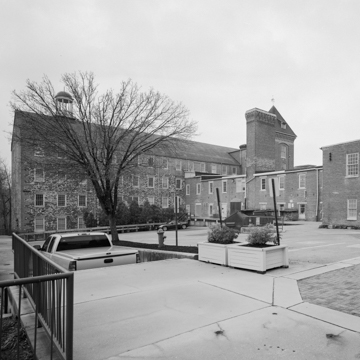The Savage Manufacturing Company was founded in 1822 by the Williams Brothers at the site of a c. 1810 gristmill and takes its name from financial backer John Savage of Philadelphia. Located on the north bank of the Little Patuxent River, the complex included a stone textile mill, gristmill, and sawmill, all using waterpower from the river falls. By 1825, the textile mill was producing cotton duck, a heavy canvas used for ships sails, tents, and other purposes, and employing two hundred people, mainly women and children, as was typical in the textile industry. Baltimore dry goods merchant William H. Baldwin Jr. bought the operation in 1847. His family owned Savage Mill for the next hundred years, expanding the facility to increase production numerous times, such as the addition of a brick weaving shed in 1916. Production was converted to coal-generated electric power in 1918; the mill plant also provided electricity for the town of Savage. Textile production ceased in 1948, and after a short-lived Christmas ornament manufacturing endeavor in the early 1950s, the mill closed permanently. In the early 1970s, the mill complex was adapted for a restaurant, artist studios, and antique shops.
You are here
SAVAGE MILL
If SAH Archipedia has been useful to you, please consider supporting it.
SAH Archipedia tells the story of the United States through its buildings, landscapes, and cities. This freely available resource empowers the public with authoritative knowledge that deepens their understanding and appreciation of the built environment. But the Society of Architectural Historians, which created SAH Archipedia with University of Virginia Press, needs your support to maintain the high-caliber research, writing, photography, cartography, editing, design, and programming that make SAH Archipedia a trusted online resource available to all who value the history of place, heritage tourism, and learning.


